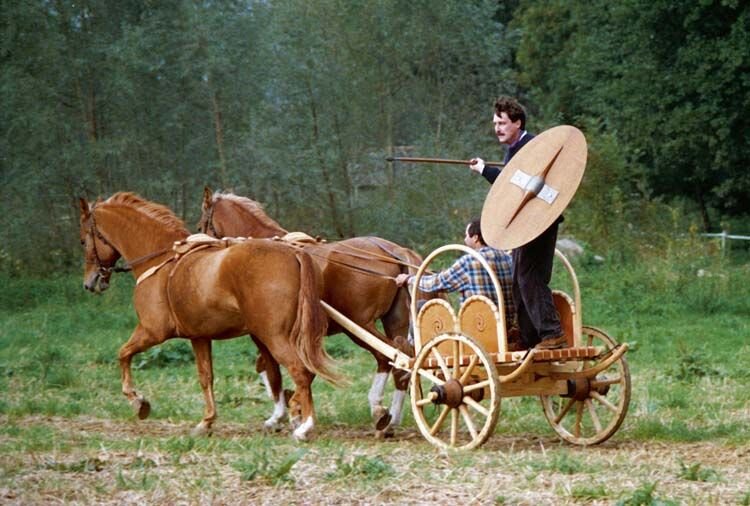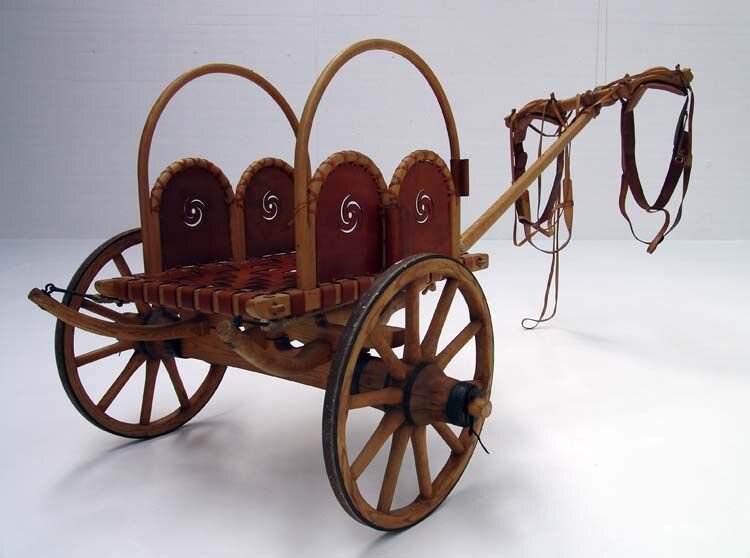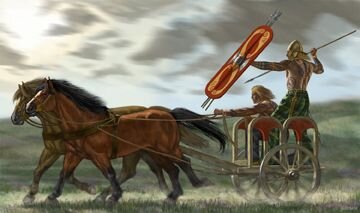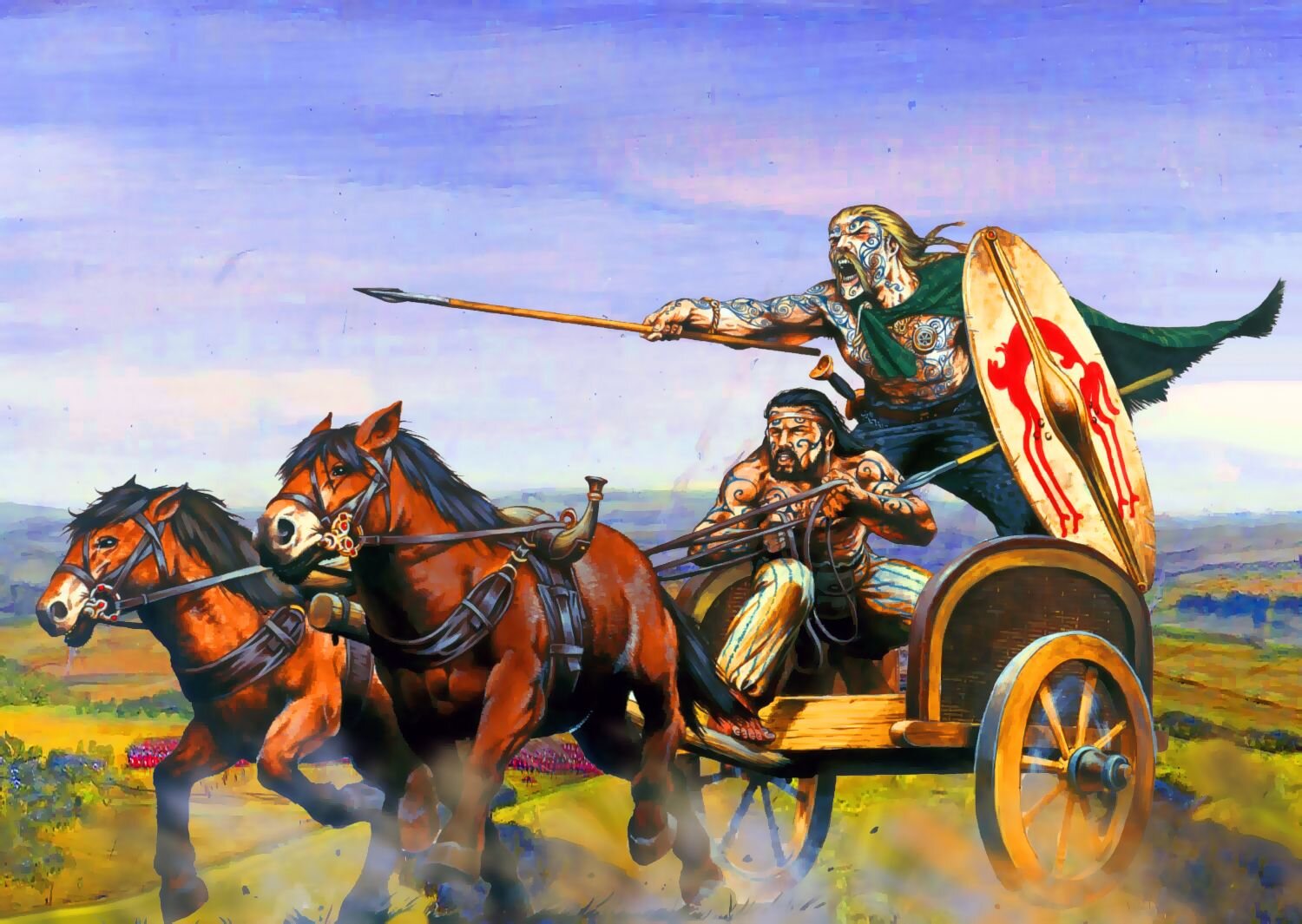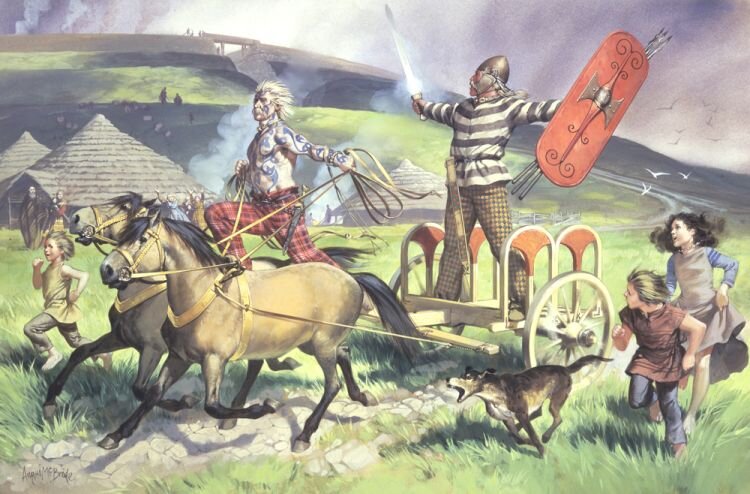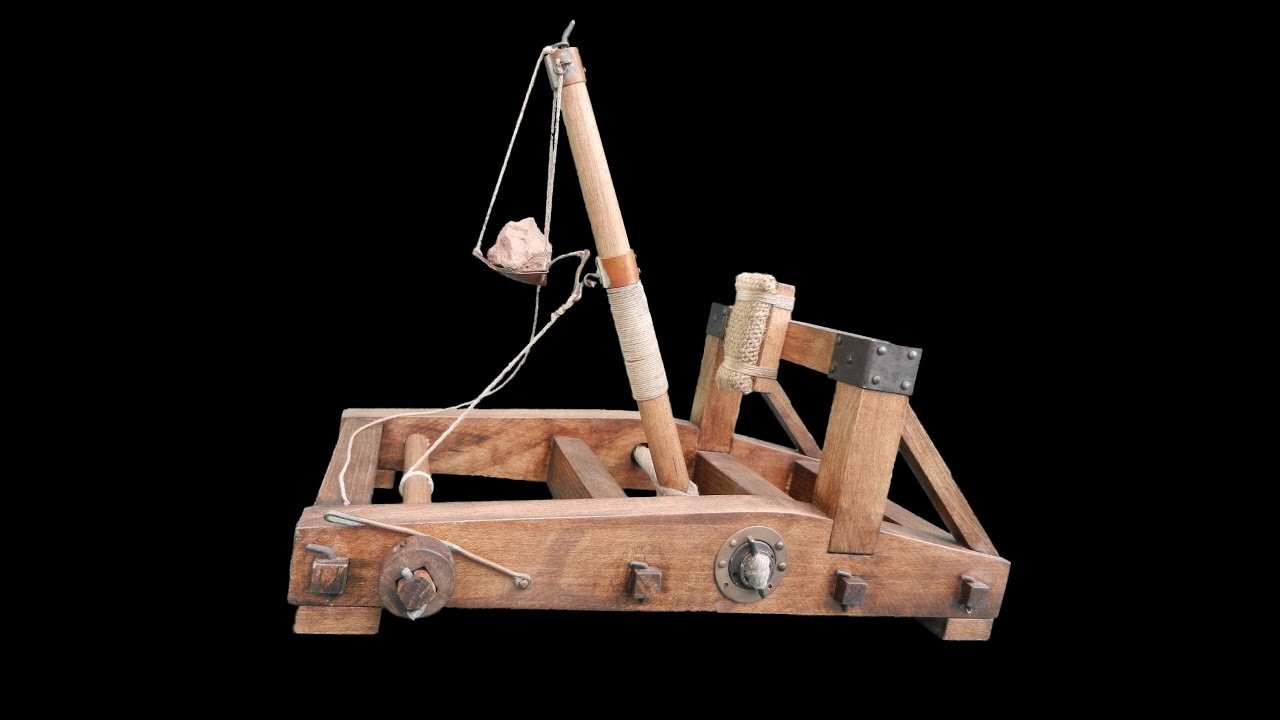Support equipment
Celtic Chariot
Period: 200 AD
Length: 4 metres / 7 feet 4 inches
Width: 6 feet or 1.8m
The Celts were experienced in breeding and training horses. As well as riding on horseback into battle, war chariots were developed to suit the small sturdy animals bred by the tribes. Charioteers were often professionals employed by chiefs to drive them into battle.
The Celtic Chariot is a simple and light construction providing a platform for the charioteer and a fighting companion to attack and retreat.
Two small ponies are harnessed to an axle and framework supporting the fighting platform.
The surrounding construction provided a little protection and a secure location to hold onto.
Mangonel
Period: 200 AD
Length: 5 metres / 16 feet
Width: 3 metres / 10 feet
Siege weapons and military machines developed slowly based on designs such as the mangonel or onager.
These crude devices used the energy of twisted sinews and ropes to launch rocks and burning projectiles over defended walls.
The construction of the mangonel had to withstand severe impacts and would have been extremely difficult to control.
The launching arm of the mangonel is wound back against the torsion of the rope by lever and pulleys. Once restrained, the tray at the end of the beam is loaded with a suitable rock. The catch restraining the launching arm is released and the arm pivots forward to release the missile.
Though probably regarded with awe in their own time these weapons would have had limited range and usefulness.
Trebuchet
Period: 1300 AD
Length: 6 metres / 20 feet
Width: 4 metres / 13 feet
The English used some machines to attack Caerlaverock castle in 1300.
The Trebuchet with its large counterweight would have been difficult to move but recent reconstructions have shown that these weapons are capable of quite accurate ballistics.
The construction of the Trebuchet would require strong construction to withstand the stresses involved.
The arm is wound down on the spindle and the energy stored in the stone or earth filled counterbalance box is used to launch the missile loaded in the sling. As the beam arm swings over, the sling releases the missile.
The range and release are adjusted by varying the weight of the missile and the counterbalance.
Carnyx War Trumpet
Period: 750 AD
Length: 1.6 metres / 63”
Width: 15 cm / 6”
Battles were either conducted as formal skirmishes between tribes or as raids to acquire goods and livestock. Preparations involved celebration and drinking and during battle war cry and noise were essential.
The Carnyx war trumpet is well established, particularly the Deskford example, reconstructions of which have been played and recorded.
The noise of the instrument is designed to be load and piercing with the trumpet played over the heads of the warriors to increase the effect.
The Carnyx is a simple bronze trumpet with a mouthpiece and an extended bell-mouth in the representation of an animal head. The lower jaw of the animal is jointed and moved to create the effect of a live animal enemy.
Bagpipes
Period: 1650 AD
Because of their use for leading Highland regiments into battle, Bagpipes were regarded by the British government as a weapon of war.
The bagpipes developed in many areas of Europe and Asia and were more widely adopted in the Highlands during the fifteenth and sixteenth century.
The Bagpipes illustrated have two drones, a chanter and a mouth piece. The instruments are carved from hardwood and set with ivory fittings. Later Great Pipes are fitted with an additional extended drone. The bellows from a pig bladder are covered in coarse braided cloth.
Powder Horn
Period: 1750 AD
Length: 20 cm / 8”
Width: 10 cm / 4”
Before preparing the charge for a pistol or rifle, powder was stored in a small watertight container, or horn.
The Highland Powder Horn is distinguished from all others by its peculiarities of form and ornament.
It is made from a neat's horn - the hard shell is softened with water and then beaten and pressed to form a flat sided vessel.
Then fitted with a wooden bottom, and a plug for the mouth, which is frequently also encircled with a mounting of lead. The shape was convenient for carrying and the pointed tip could be adapted to form a spout for pouring the gunpowder into the paper charge.
The wide end is sealed with a shaped wooden plug and a pouring spout of brass with a wooden plug is fitted to the cut horn tip. No portion of the Highlander's equipment appears to have been more prized or more beautifully decorated. Horns of this type often featured highly decorative carvings and embellishments, usually with celtic origins
Flags or Ensigns
Period: 1650 AD
Length: 1.5 metres
Regiments carried a flag or colour to represent their origin or allegiance.
Many regiments used the white saltire on blue background and others more symbolic heraldic devices and symbols such as the lion rampant of the king.
A number of colours were captured at Preston, Dunbar and Inverkeithing and accurately recorded by a Royalist officer.


